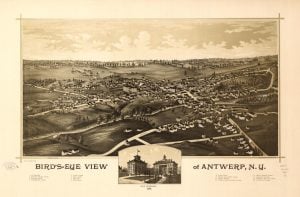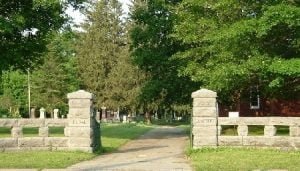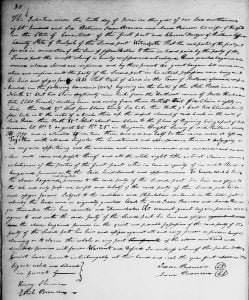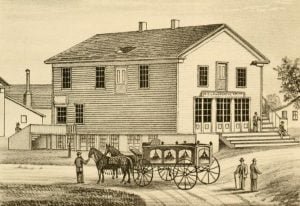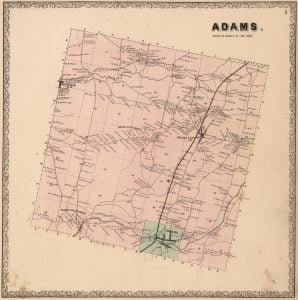This 1890 Business Directory of Brownville New York is transcribed from Child’s Geographical gazetteer of Jefferson county, N.Y., 1685-1890. Adams Collegiate Institute, D.A. Dwight, pres.; James G. Kellogg, vice-pres.; A.K. Hale, M.D., sec’y; T.T. Carter, treas.; Orlo B. Rhodes, prin.; Mrs. Helen Butterworth Coughlan, prec. Adams Laundry, Hodge & Potter, props., Church. Adams Lumber Co., John A. Cameron, manager, manufs. of and dealers in lumber, sash, doors, blinds, moldings, builders’ hardware, paints, oils, and glass, contractors and builders. Allen, Herbert a., (Smithville) r22, farmer 100. ALLEN, W.J., editor and publisher Jefferson County Journal, job printer. Alport, Clarence C., resident, h … Read more



